Italy 37.75°N / 14.99°E. Etna is Europe’s largest and most active volcano.1 It’s also one of the most accessible, easily visited from the bustling city of Catania. You can even get the majority of the way up on a bus or cable car. However, to really experience it, you’ll want to continue on foot to the summit craters.
Published September 27th 2025 by Josef Clifford.
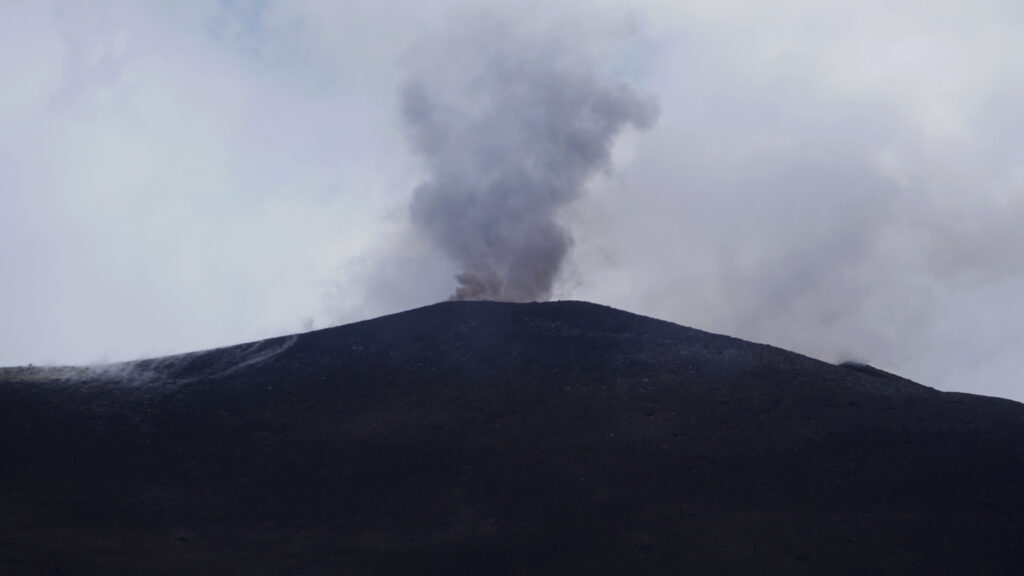
Getting there: the nearest city to Etna is Catania. If coming from elsewhere in Italy or Europe, check Busbud or Trenitalia for bus and train travel.
Tours: you only really need to go on a tour if you want to reach the summit craters. My friend recommends this one, she said they’re very organised and friendly (more info here). You can check other tour options on Tripadvisor here. More details in the Practicalities section.
Safety: volcanoes can be very dangerous. Check latest activity reports here. Etna is heavily monitored and access will be restricted during periods of heightened activity (or in poor weather conditions). However, volcanoes can be volatile and sometimes there’s limited warning of impending activity – so as always, travel at your own risk!
Jump to a section
> Taking the cable car and 4×4 bus
> Summit tours
> A bit of volcanology
> Getting there and other practical bits
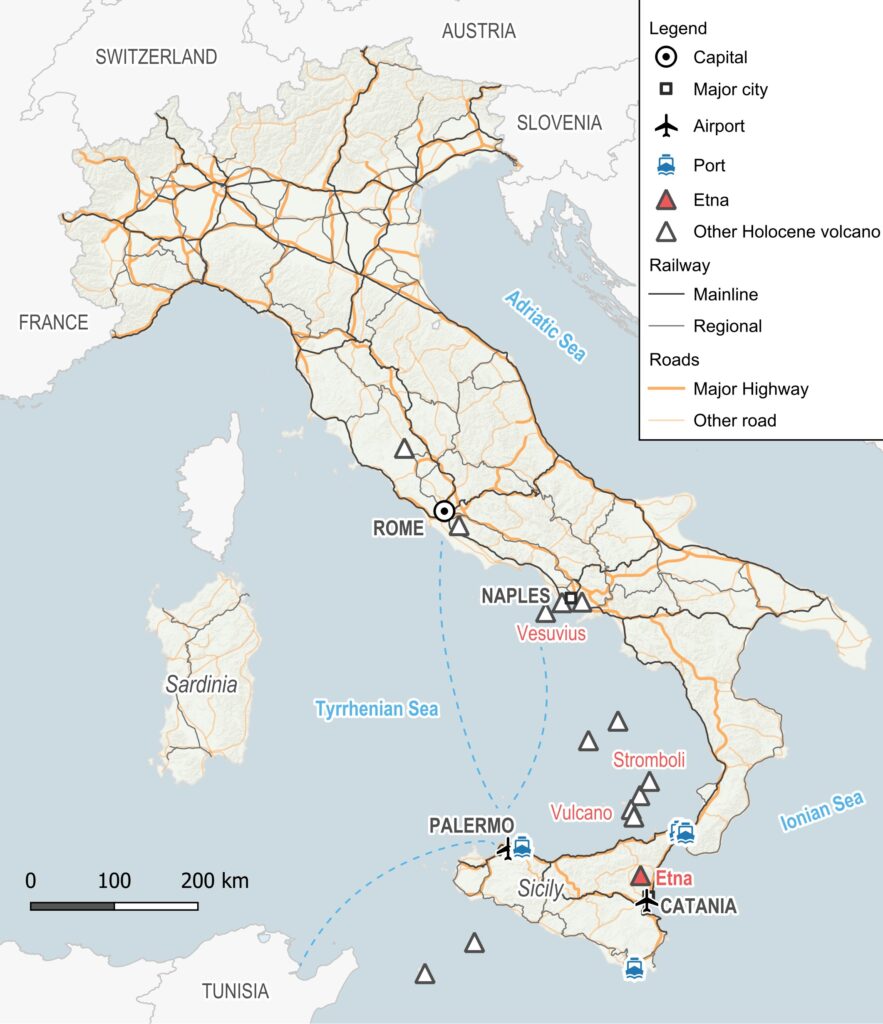
The starting point for your Etna trip will most likely be Rifugio Sapienza (1900m). You can easily reach here from Catania by bus or taxi (see practicalities section at the end of the post). Note that you can also approach Etna from the north for a more challenging and less frequented route.
There are a few smaller craters around the rifugio which you can explore. You’ll also find a hotel, several restaurants and souvenir shops. But I’m guessing you didn’t come here for shopping, so you’ll most likely want to be getting higher up.
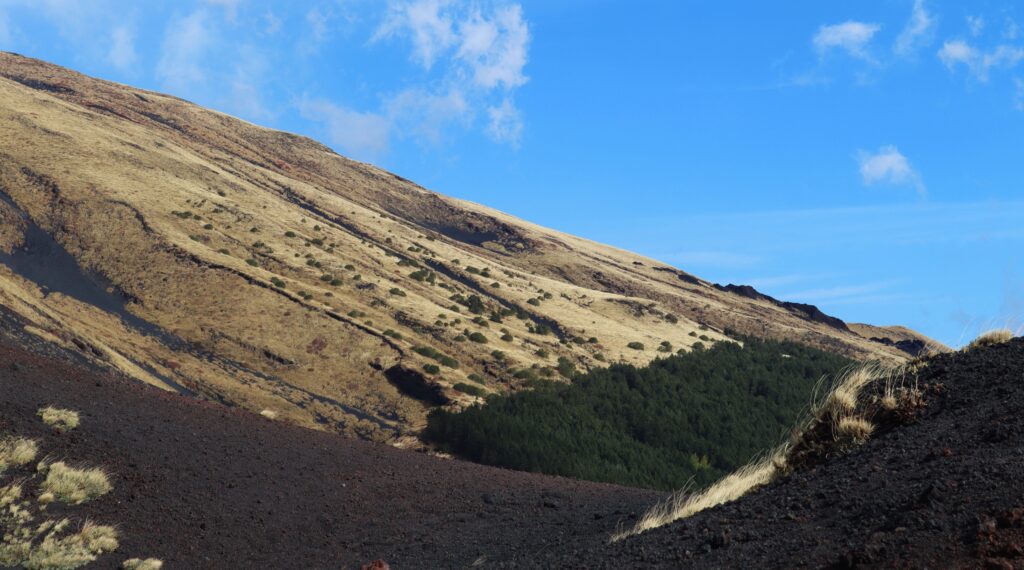
From the comfort of the bus
So let’s head towards the summit. This being Europe, there’s always an easy option. There’s a cable car, the Funivia dell’Etna, which will take you up to 2,500m (adults: €52 / children: €30). If it’s too windy, like it was for me, there’s also a regular 4×4 bus that will take you up to that point. In better weather conditions, you can take the cable car and then the bus up to around 2,900m (adults: €80 / children: €50). Book here.
To reach the summit craters, you need to go on a tour. This had been my plan but due to crazy winds, it was too dangerous and the trip was cancelled. However, my friend did this more recently – read about her experience below (click here to jump to that section). Explore tour options on Tripadvisor here .
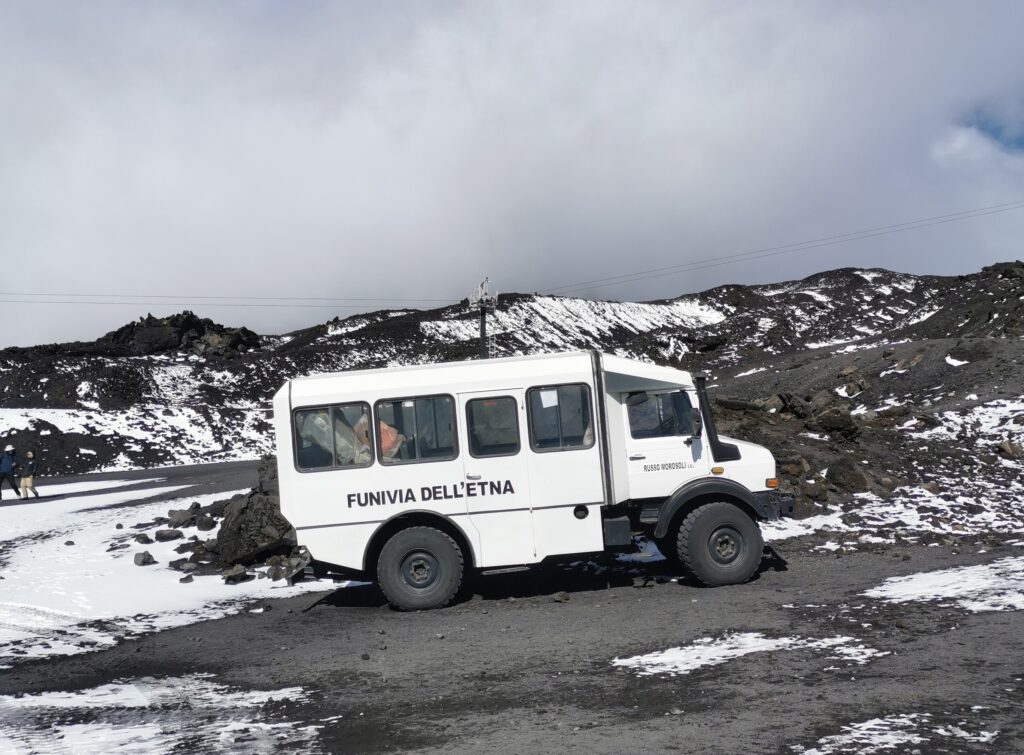
It takes about 20 minutes to reach the 2,500 metre point on the bus. It’s a slow but scenic ride over the ash covered landscape. There’s another small cafe here. It’s cold up here in November so I stopped for a quick tea.
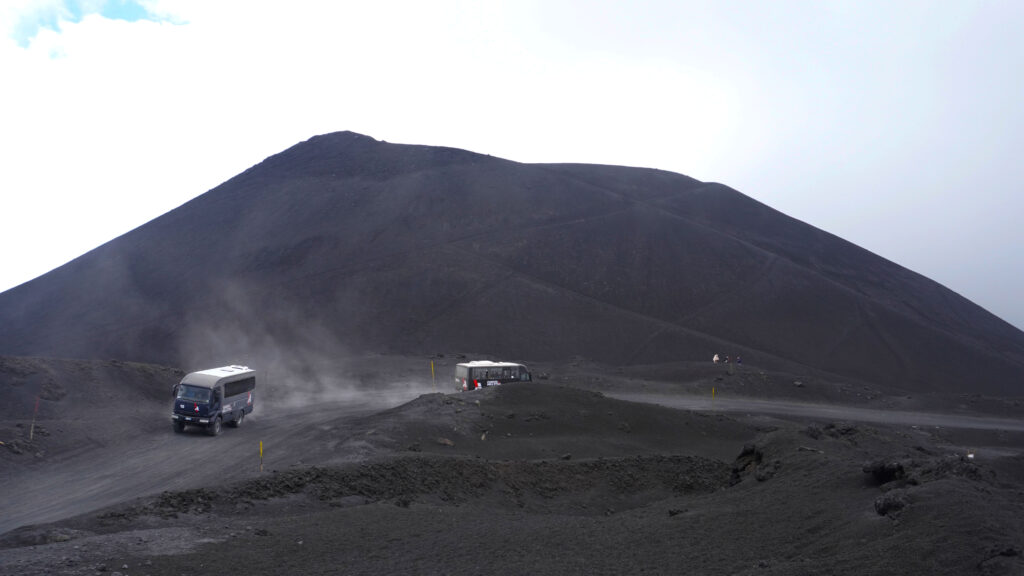
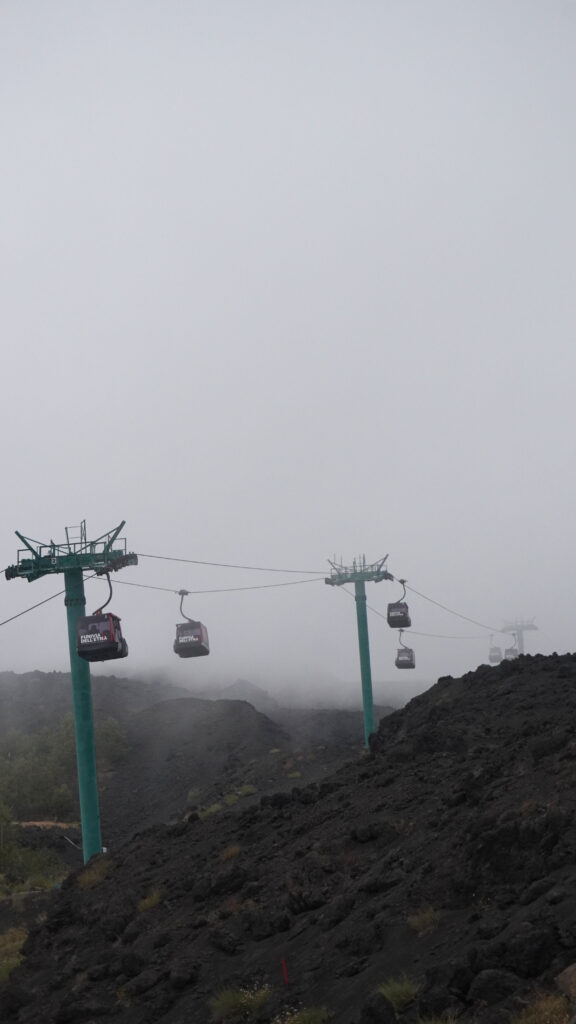
Windswept views on foot
I continued walking a bit on foot. The patchwork of bright snow on the black ash made for quite a beautiful scene. It was extremely windy and I was almost crawling on all fours at one point as I felt like I was going to get swept away.
There’s a few paths you can follow up. Or you can scramble up some of the nearby craters. I could hear the rumblings of small explosions. A stark reminder that you’re half way up an active volcano.
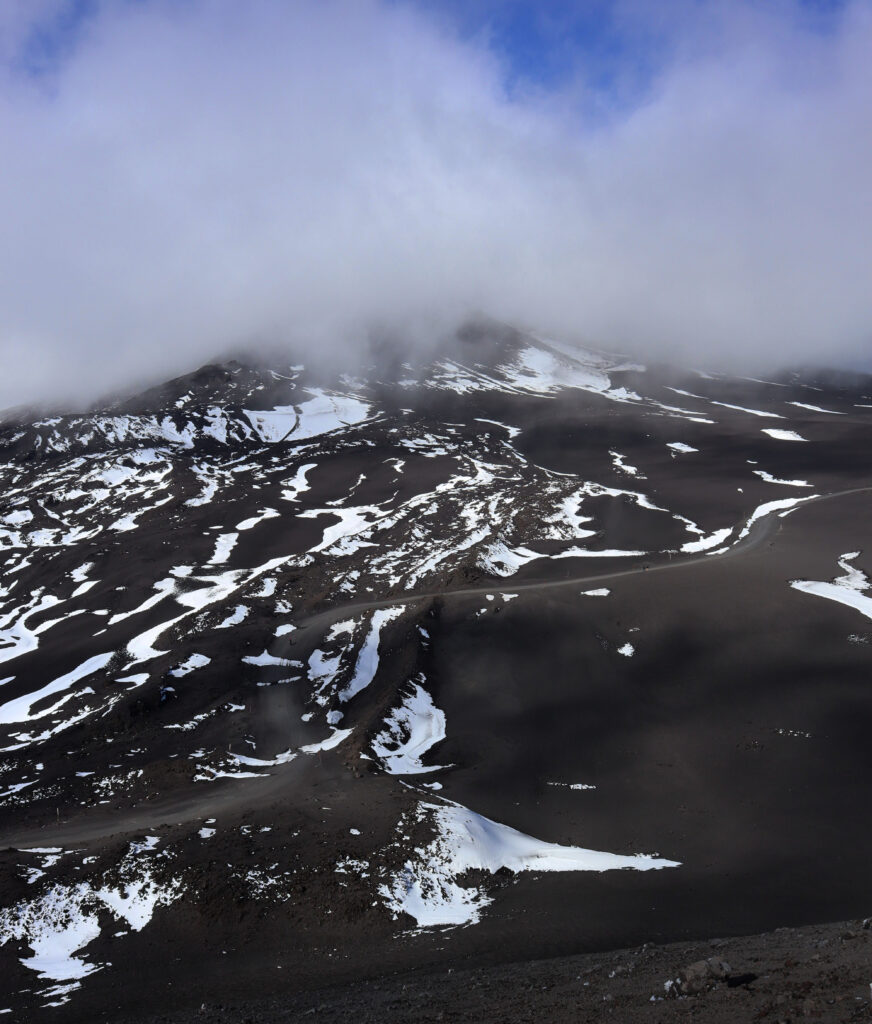
The summit tour
To get any further, you need to go on an organised trip. I was gutted to not be able to do this due to the high winds. These photos are from a trip my friend did more recently.
The trip involved a 4×4 bus ride up to 2,900m and then a 1.5 hour walk to the summit craters. Here you’ll see the yellow and white sulfate deposits and may see some eruptions and smoke plumes, depending on the activity level at the time.
After, there’s a further 2.5 hour walk back down the ash slopes to the cable car station. All in all, the trip takes around 7 hours. Book here or check other tour options on Tripadvisor / Get Your Guide.
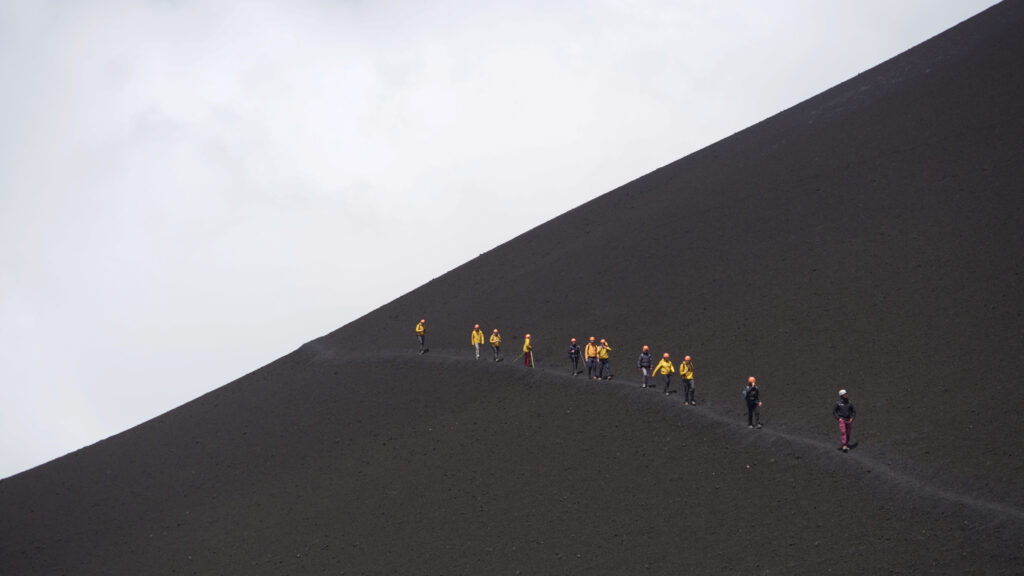
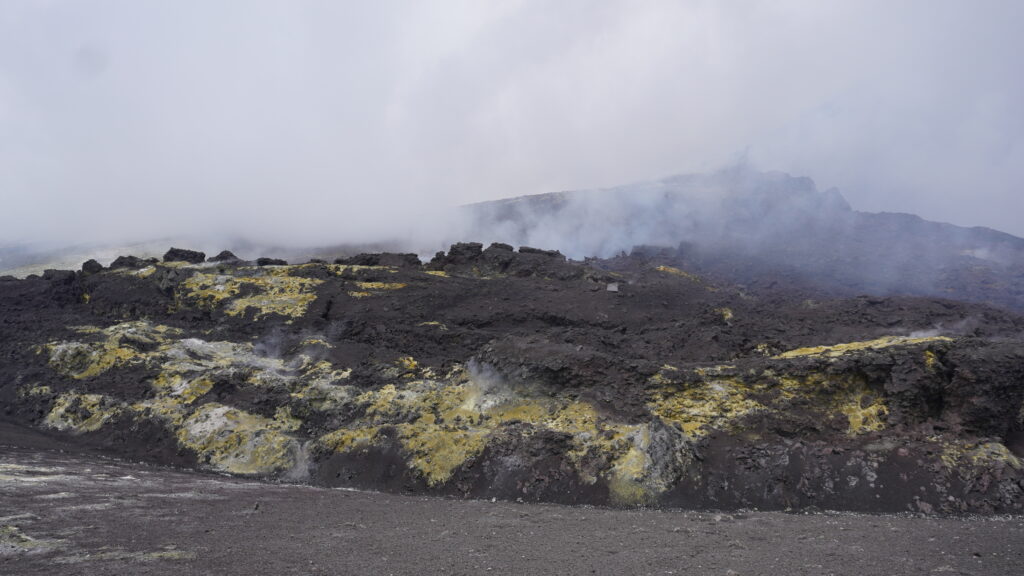
An active volcano on the edge of Europe
Etna (along with Stromboli, located just north of Sicily in the Tyrrhenian Sea) are Europe’s most active volcanoes. Etna is a massive stratovolcano (a steep-sided volcano composed of layers of lava and tephra from historic eruptions) looming over the city of Catania.
With a current altitude of around 3350m, Etna’s height varies depending on recent eruptions as new lava flows and crater collapses change the shape of the summit.
Etna is located above the convergent plate boundary between the African and Eurasian plates. As the African plate subducts beneath the Eurasian plate, the rock melts forming magma which rises to the surface, erupting regularly as lava at Etna volcano (magma becomes lava when it erupts at the surface).
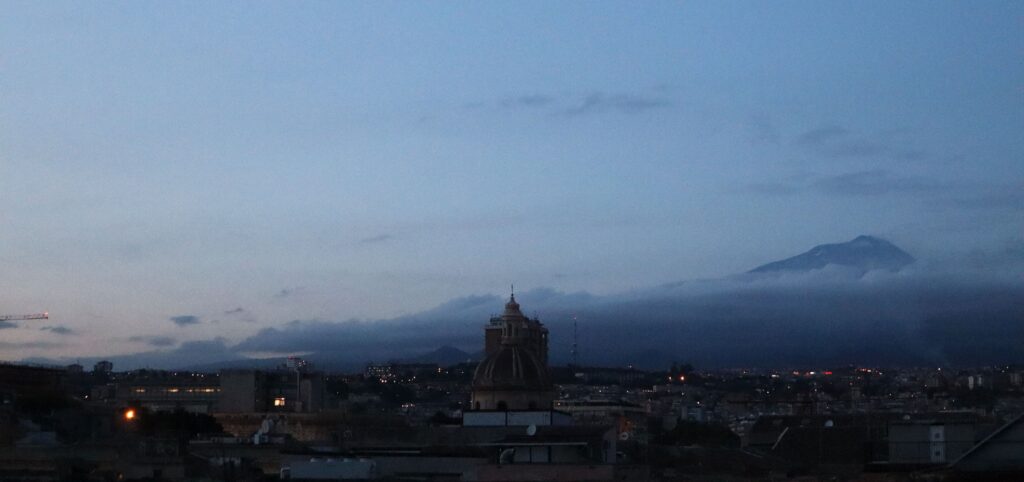
Etna is covered in thick basaltic lava flows and ash deposits from previous eruptions. On the lower slopes, the ashy soils are some of the most fertile in Europe. Nutrient rich, they support abundant vineyards and orchards.
Geological evidence suggests volcanic activity at Etna first started around 500,000 years ago, off the ancient shores of Sicily. Activity migrated towards the current location around 170,000 years ago.
The stratovolcano seen today, also known as Mongibello, was constructed over an older shield volcano, a type of volcano with a low broad profile.
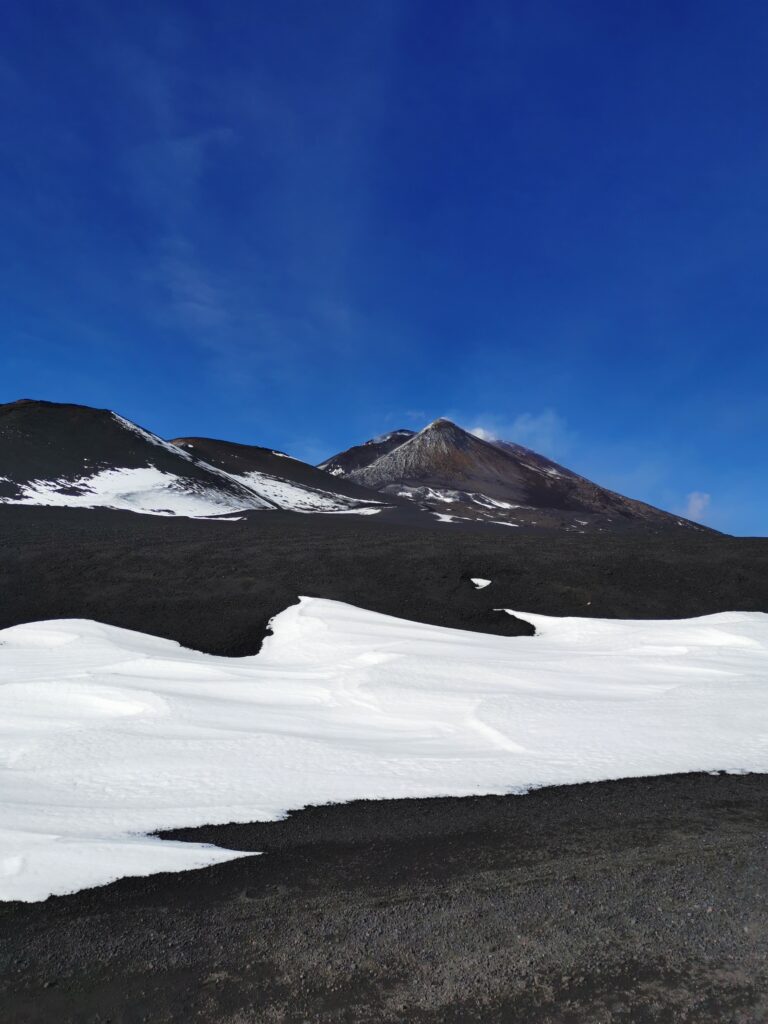
Most eruptions occur at the summit craters and can be highly explosive. However, the most impactful have actually been the flank eruptions because they occur in the more populated areas at lower altitudes.
Ah, ah, lava!
Fatalities are rare during Etna’s eruptions and usually occur when people get closer than they should. Lava flows are the main hazard. But these are relatively slow. There’s usually plenty of time to walk away (unless you’re at Nyiragongo volcano in the Democratic Republic of the Congo, where flows of up to 60km/hour have been recorded).2
One of Etna’s most violent historical eruptions occurred in 1669, when 830 million m3 of lava was ejected from fissures above the town of Nicolosi on the southern flank. The lava flows, along with seismic activity prior to the eruption resulted in extensive damage to the town and destroyed several villages downslope, reaching as far as western Catania.
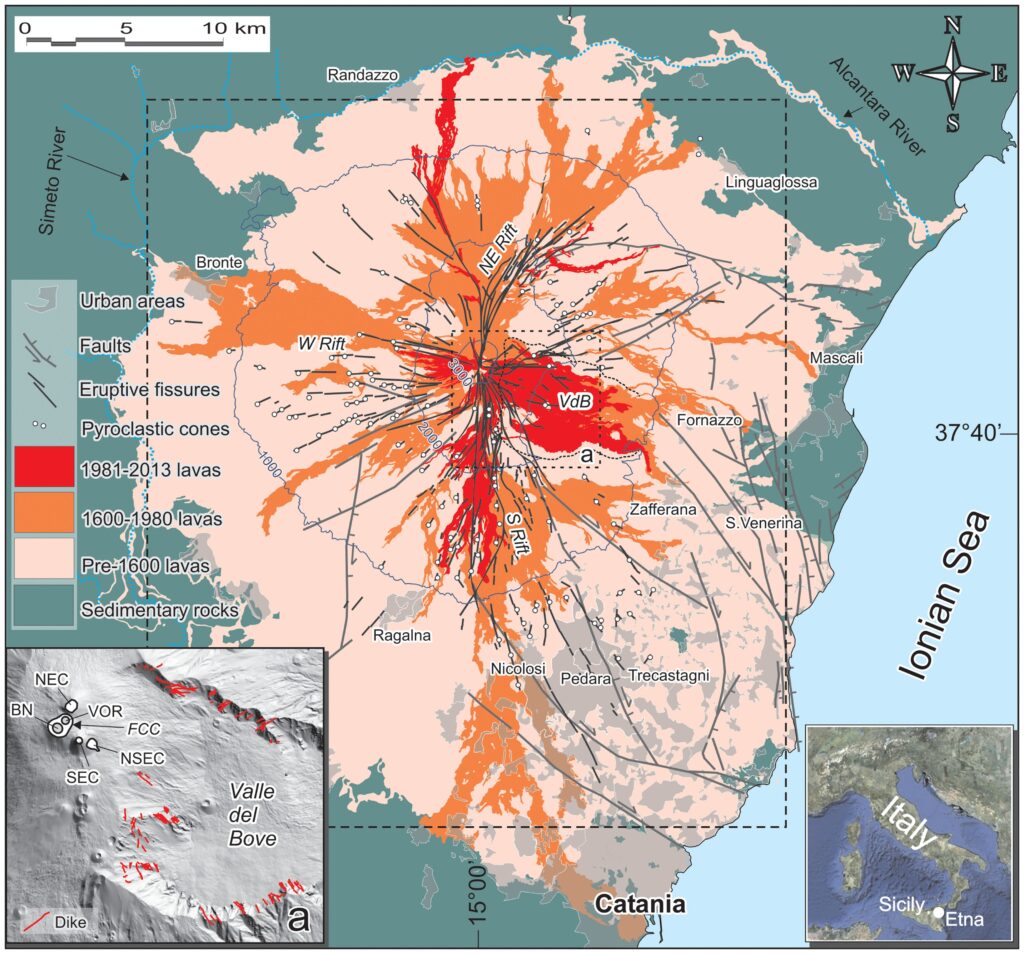
At Etna, some attempts have been made to divert lava flows in previous eruptions, with varying success. Etna mostly produces lava flows known by the Hawaiian word ‘A‘ā. Cooling to form a rough blocky crust, you can remember the name as the uneven surface really would make you go “ah ah” if you were barefoot on there.
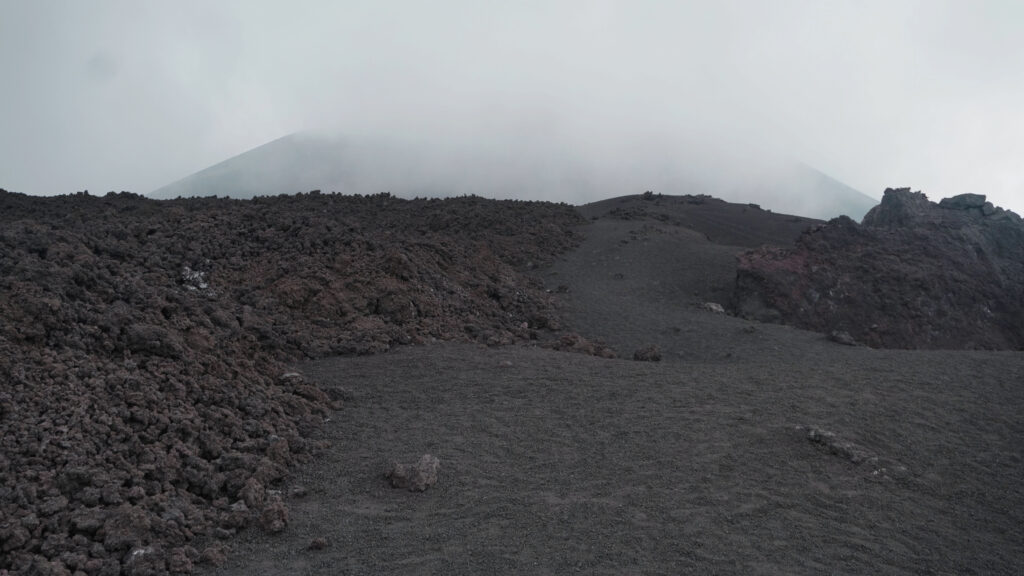
Eruptions that changed the course of history
Etna has a documented record of eruptive activity that exceeds 2700 years. In 396 BCE, an eruption changed the course of war and kept the Carthaginian army from reaching Catania.4
Another major eruption several thousand years ago resulted in the collapse of the eastern flank and an enormous landslide similar to that of Mount St Helens in 1980. This left a huge depression known as the Valle del Bove (Valley of the Ox) and led to a tsunami in the Mediterranean Sea.
Eruptions have occurred throughout the 20th century up to the modern day, including almost continuous activity in the 1970s and Strombolian5 eruptions between 2002 and 2020.
There were some rumblings and plumes when I was there and quite a large eruption just a few days after I visited in November 2023. As recently as June 2025, there was an eruption that resulted in pyroclastic flows, relatively rare for Etna. Luckily no one was injured.
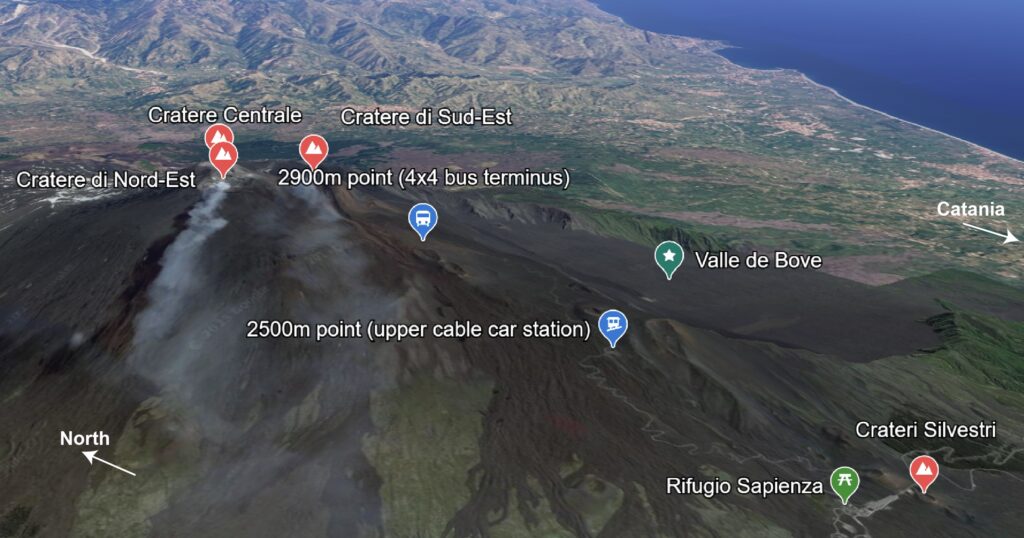
Getting there
Getting to Catania: the nearest city to Etna is Catania. Catania airport is served by cities across Europe, as well as New York and Dubai. If you’re in the region already and feeling more adventurous and environmentally friendly, you can reach Catania by land and sea. There are ferries from Catania to mainland Italy, Pozzallo to Malta, and Palermo to Tunisia.
Italy has an excellent high speed rail service. It’s around a 8 hour journey to Naples and 10 hours to Rome. The train actually goes onto the ferry to reach the mainland, which is an experience in itself. You can also take a bus to other destinations in Italy. Check Busbud for buses or Trenitalia for trains.
Getting to Etna: to reach Rifugio Sapienza, you can take the daily AST bus from Piazza Giovanni XXIII in Catania at 8.15am. A return ticket costs €6.60 and you can buy the ticket from the driver. Return is at 16:30. The journey takes around 2 hours each way.
Other options are to take a taxi or rent a car. I took a taxi as I needed to get there earlier for my tour (which I later found out was cancelled annoyingly!) This set me back around 60 euros one way in November 2023.
Tours
Summit tours: my friend went with Gruppo Guide Alpine Etna Sud. They have daily departures at 9.30 and 10.30am. If you’re taking the AST bus, you’ll be able to join the departure at 10am. The cost is €130 per person and includes your cable car return ticket, Jeep one way up and guide service. They also provide equipment such as a jacket, socks, shoes and a helmet.
There are also various other options – check Tripadvisor. You can also check Get Your Guide, which offers a selection of tours with reviews here.
Where to stay
In Catania: I stayed at the Yard Hostel, which is walking distance from the historic centre and the bus/train station. I got a single room as I can’t deal with snorers in dorms anymore (I paid €65 a night in November 2023 but prices are currently around €90). They also have dorm options for around €30. There are plenty of other hostels (see Hostel World) and hotel options (see Tripadvisor) to suit all budgets in the city.
On Etna: if you want to stay on Etna itself, you can stay at Rifugio Sapienza for around €100/night. Otherwise, there are various options on Etna’s slopes. If you have a car and looking for somewhere to stay more in nature, these could be good options.
More practical bits
When to go: the best months to go are generally April, May, September and October. This way you avoid the searing temperatures and crowds of the summer and the worst of the winter snow.
What to bring: the weather can change very quickly on Etna. Make sure to bring a windproof rain jacket and sturdy footwear for walking on ash and rocky (cooled) lava flows. Make sure to also bring lunch, snacks, gloves, sunglasses, a cap and sunscreen.
Extend your trip: if you’re looking for more volcanoes, Stromboli isn’t too far away. There’s also Vulcano. Sicily is full of other wonders. You can explore mainland Italy too. There’s far too much to go into here! I was working in Tunisia at the time and flew to Malta first to meet a friend, then took a ferry to Sicily (2 hours). I then took another ferry from Palermo back to Tunis (around 10 hours). Direct Ferries is my go-to ferry booking website.
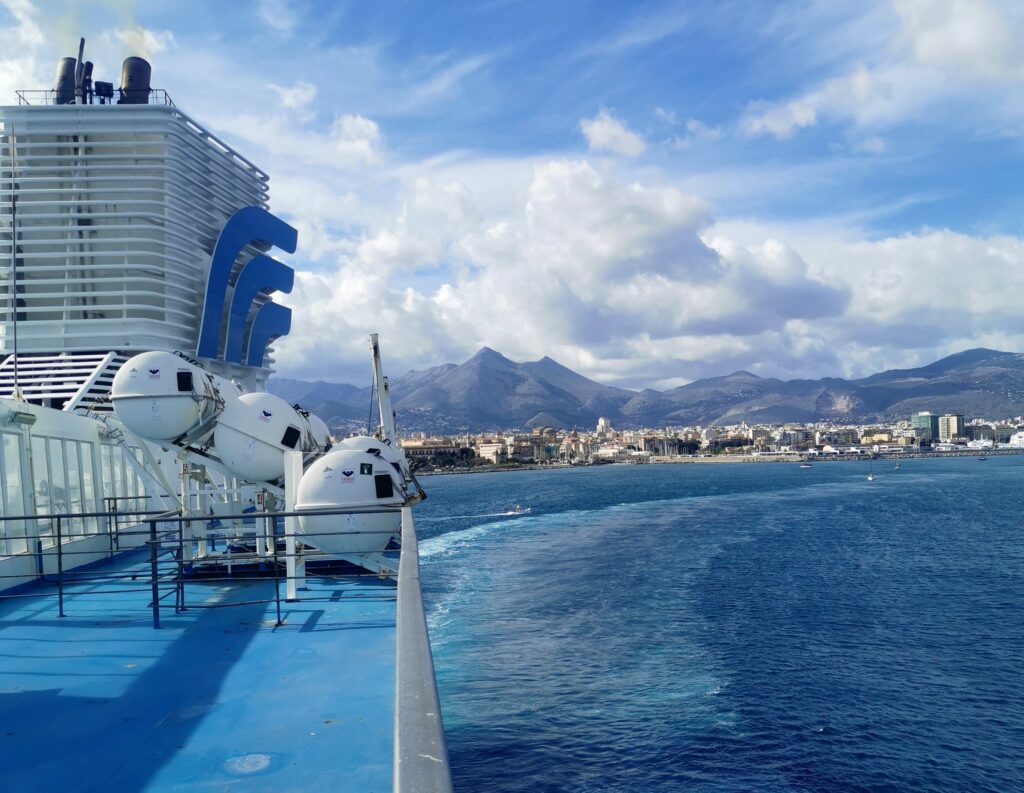
- Both Etna and Stromboli are considered to be Europe’s most active volcanoes. ↩︎
- NASA Earth Observatory, 2001. Nyiragongo Volcano before the Eruption. ↩︎
- Negro, C., Cappello, A., Neri, M. et al. Lava flow hazards at Mount Etna: constraints imposed by eruptive history and numerical simulations. Sci Rep 3, 3493 (2013). ↩︎
- Geographical, 2023. Sicily’s Mount Etna erupts & causes Catania airport closure. ↩︎
- Named after the characteristic eruptions of Stromboli volcano, Strombolian eruptions occur as moderately explosive intermittent bursts which eject incandescent pyroclastic material a bit like a firework display. ↩︎
Discover more from magmachambertravel.com
Subscribe to get the latest posts sent to your email.